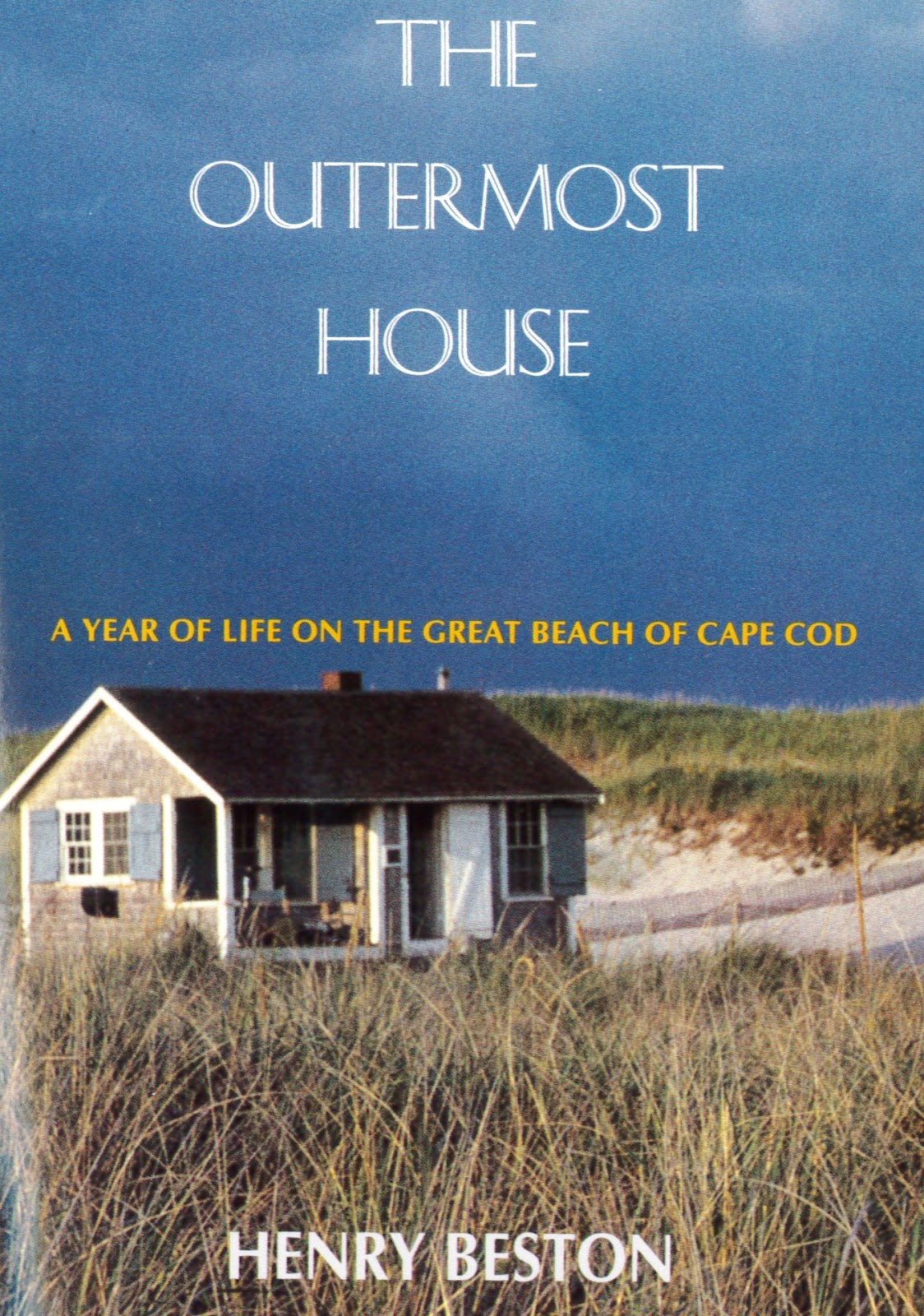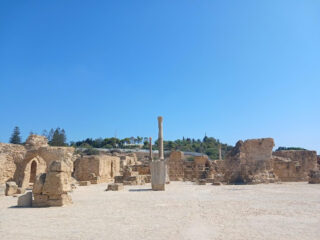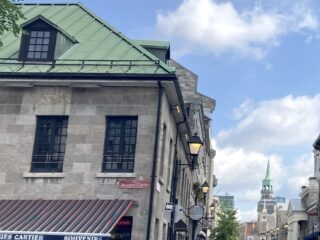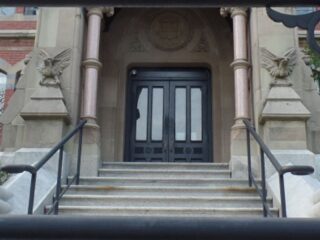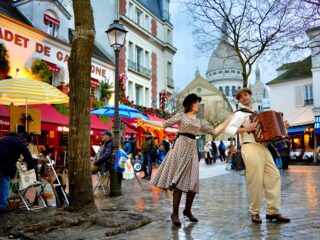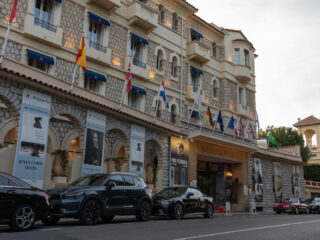By Tim Tejani
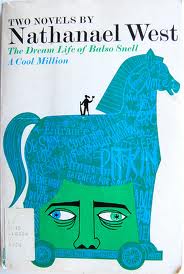
El Centro, California lies sixty miles inside the Arizona border in Imperial County. This formidably-named milieu can pass all but unnoticed astride the whir of Interstate-8. It stands a paradox – a place where agriculture impugns the harsh realities of the desert, where pastoral farmlands defy the ever-expansive urban center to the west, where past and present remain eerily coalesced.
El Centro, California lies sixty miles inside the Arizona border in Imperial County. This formidably-named milieu can pass all but unnoticed astride the whir of Interstate-8. It stands a paradox – a place where agriculture impugns the harsh realities of the desert, where pastoral farmlands defy the ever-expansive urban center to the west, where past and present remain eerily coalesced.
El Centro marks not “the center” but rather the fringe of Southern California, making it a true point of entry into the world of Nathanael West’s The Day of the Locust. And oddly, it was here among the convolution of El Centro, on the edge of his literary wasteland, where a 1940 automobile accident cut short West”s magnificent genius. But like the world his work immortalized, Nathanael West has never held beyond the reach of contradiction. West’s life and legacy have continued to weave with a thread of bitter irony.
While many closely associate The Day of the Locust with California in general and Hollywood in particular, West was neither a native of the region nor claimed the Golden State as home for very long. In fact, the author found Los Angeles quite unwittingly and only by the cynosure of early failure. Born Nathan Weinstein in 1903 to a prominent Jewish-immigrant family, West (he would adopt the anglicized pen name in 1926) grew up amid the ethnic and intellectual ferment of early-century New York. A disinterested if not lazy student, West won admission, by means of questionable scruple, to Tufts University and eventually to Brown, where he fell into a circle of aspiring young writers. After a several-year stay among the bohemia and avant-garde of “Lost Generation” Paris, West began work on his first novel, The Dream Life of Balso Snell. The book’s commercial and critical demise (it sold only five hundred copies) did little to stifle West”s ambition, and the writer plunged immediately into a second, more promising work.
In contrast to his previous endeavor, Miss Lonelyhearts earned West the support of a leading publishing house and auspicious praise from reviewers. However, if 1933 initially promised to be West’s year, it also witnessed deepening economic depression; on the eve of the release of Miss Lonelyhearts , the publisher declared bankruptcy. Mired in the ensuing legal actions, Miss Lonelyhearts languished for months before its final, anticlimactic release. Having lost both the moment and its publishing momentum, few copies sold. The story found a new patron, however, in Twentieth Century-Fox studios, who quickly purchased film rights. Hoping to oversee the transition of Miss Lonelyhearts to the screen, West followed his novel to Hollywood. He would depart California soon after the film”s completion (Advice to the Lovelorn, as the studio renamed the loosely-adapted story, would founder upon its release), returning briefly in 1936 and settling permanently in Los Angeles in 1938.
West entered California society during a critical era of transition in the state’s identity. Pre-depression California bore faint resemblance to the proverbial postcard California of today. By the early thirties the state and its people still lacked vivid cultural and literary definition. Little had been written about the California ethos, and the state had only recently begun to emerge as source and subject in American literature. Moreover, the political, economic, and social heart of the country rested firmly in the Northeast. California, like much of the West, remained an eccentricity: distant, foreign, it lingered as a frontier outpost in the American mind.
With the thirties, however, this ambiguity dissolved under the device of a nascent cultural mediator, the film industry. While truly a creation of the twenties, the modern motion picture acquired an unprecedented importance and visibility during the following decade. Hollywood”s ascendancy came alongside the Depression as belabored Americans crowded local theaters to find both hope and diversion. A “dream industry” had emerged, and millions of moviegoers previously unfamiliar with California now heard its siren call of fame, beauty, and comfort. With the 1930s the Hollywood image, the “California dream,” increasingly displaced California of old, leaving social dissonance in its wake. Into this admixture of cultural tumult, West arrived in 1938. Its mood and nuance were to become the subject of his life”s final work, initially entitled “The Cheated” but renamed The Day of the Locust.
Published in 1939, Day of the Locust delivered West”s sardonic vision of the new, emerging California. Amid Hollywood-dominated Los Angeles, West found a realm so imbued by consumer culture and its “dream factories,” as to be wholly unaware of its vapid and ironical absurdities. The cityscape unfolds as an unending film reel where the central difficulty is discerning where charade ends and reality begins. West”s central characters, such as starlets, aged vaudeville clowns, cowboys, child actors, and quiet straightmen, are key to the plot. They present a veritable listing of 1930s Hollywood cliches. Beyond these “extras” are two groups: those who find a place in the masquerade and those who do not. Describing the latter, West writes: “Their clothing was somber and badly cut, brought from mail-order houses…. they loitered on the corners or stood with their backs to the shop windows and stared at everyone who passed. When their stare was returned, their eyes filled with hatred.” These are the people who “come to California to die.” Their aspirations frustrated, they are unwilling exiles caught between the city’s dramaturgy and their own latent violence. The book’s final scene powerfully captures this obscurity with the conflation of a riot and a movie premier. In the midst of the mob, a crowd member intones, “Somebody hollered, ”Here comes Gary Cooper,” and then wham!” “That ain”t it,” a second man explains, “This is a riot you”re in.”2
West’s characterization of Hollywood’s physical space also contributes to the blurred sense of reality. Revealing its Dadaist and Surrealist influences, particularly montage schemes, Day of the Locust rejoices in convoluted imagery. West defines the city as a “dream dump,” a “sargasso,” an endless studio backlot strewn with movieland flotsam and false edifice. Wandering through its avenues, one is as likely to encounter a reenacted Battle of Waterloo as a workaday street scene while surrounding canyons overflow with Mexican ranch houses, Samoan huts, Egyptian and Japanese temples, and Swiss chalets constructed from paper and plaster.3 West no doubt capitalized on the insider knowledge he acquired as a scenarist and screenwriter for Republic and RKO studios. The book’s characters also present composites, inverted for surreal effect: Adore Loomis is a cute eight-year-old child actor who at his mother’s request performs with salacious enthusiasm; Earle Shoop is the tall, quiet cowboy yet is humbled physically by a midget and sexually by his Mexican sidekick; and Faye Greener is at the same time the beautiful, alluring starlet and a talentless, whorish hedonist.
West’s commentary on the “California dream,” however, remains the central statement of the book. Observing the ascendant film and mass cultures of the thirties, West confronted in California the empty promise of consumerism and predicted that the resulting alienation and boredom would midwife society’s destruction. (The similarities to Marx’s dialectical materialist theory display West”s affinity for the radical-left politics of the period.) Those frustrated by Hollywood”s false promise of comfort, beauty, and wealth turn to “messianic rage.” “Their boredom,” West warns, “Becomes more and more terrible. They realize they”ve been tricked and burn with resentment. … Nothing can ever be violent enough to make taut their slack minds and bodies. They have been cheated and betrayed. They have saved and saved for nothing.”4 Of immediate concern, West feared such perniciousness could be harnessed by a charismatic popular leader of which the depression produced manya “Dr. Know-All Pierce-All” who would consummate the success of American fascism, beginning in the Golden State. In 1939, with Europe and Asia descending into world war, it represented a bold, if not outlandish, political and cultural caveat.
Ultimately, The Day of the Locust presented too dark a statement for depression America. In a year that embraced the hope of Steinbeck’s Grapes of Wrath and the fairy tale splendor of The Wizard of Oz, critics reprimanded West for his “bad taste.” Writing to friend F. Scott Fitzgerald, West lamented, “So far the box score stands: Good reviews fifteen per cent, bad reviews twenty five per cent, brutal personal attacks sixty percent.”5 The book sold under fifteen-hundred copies. When West”s automobile collided with a vegetable truck on December 22, 1940, he died largely unknown to the literary public and overshadowed in the press by Fitzgerald”s death the previous day.
And yet in a life embellished by irony, West”s anonymity could only be short-lived. By the late-forties, the depression had passed and the nation”s intellectuals basked in the rose-colored glow of the “American century”; in these better times, West”s critical and artistic vision found favor. Within a decade of his death, critics venerated his genius. In 1950 The Atlantic Monthly hailed West”s prose as “the brush of an artist” concluding. “[West] stands apart from most of the other Americans who were writing in the thirties, and for this reason his writing is far more likely to stick with us.”6
And so it has. Yet aside from literary craft, one reason has been West”s extraordinary prescience. Fascism and civil war failed to emerge in Los Angeles, and although conflagration would engulf the city twice in thirty years, never did it arrive at the hands of Day of the Locust-style millenarians. Yet Hollywood has impacted society in sweeping and undeniable ways, its influence escalating far beyond benign entertainment. Since West”s day, the domestic film industry has entered political and cultural conflict while extending its dominion throughout much of the globe. One cannot help but wonder how West would respond to this development and to the growing dominance of celebrity over American and world culture? What would West say had he lived to witness a Hollywood actor become president and the supplanting of cinema by television as the primary purveyor of insipid taste and falsity? Regardless, the California dream, as West observed it, has become an intensely-sought-after international commodity, making his work all the more timely.
Yet West failed to grasp the scope of the coming irony. Amid today’s complexity, one nostalgically yearns for the novel idiosyncrasies, the “screwballs and screwboxes” of West”s Los Angeles. The Hollywood backlot of Day of the Locust has given way in the postwar era to urban monstrosity, lined by an ever-expanding orthodoxy of freeways, stripmalls, and megastores. Rather than flocking to Mann”s Chinese for the next spectacle. We now consume dreams in the comfort of “stadium seats” or worse in the dour isolation of home video. People no longer come to California to die; they no longer have to.
Most surprisingly perhaps, from West’s perspective, the darkness and nihilism of The Day of the Locust have become fashionable and read for somewhat-desultory reasons. Acquiring a sort of “radical chic,” the book today draws acclaim as a “precursor of American black comedy,” a sort of depression-era Pulp Fiction.7 In this bewildering manner, West’s obelisk has attracted the mindless popularity today reserved for anything remotely ending in riot, thus fallen victim to the very culture it reviled. In a wasteland of contradiction, this is perhaps the most profound irony of all.
Jim Tejani grew up and attended college in Southern California. Now living in Boston, he is a former intern at The Atlantic Monthly.
More Resources
Magical Realism’s Nathanael West Page
Notes
1 Nathanael West, Miss Lonelyhearts & The Day of the Locust, p. 60.
2 West, p. 183.
3 West, p. 61.
4 West, p. 178.
5 Richard B. Gehman, “Nathanael West: A Novelist Apart,” Atlantic Monthly (September, 1950), p.69.
6 Gehman, Atlantic Monthly, p. 71.
7 Minneapolis Star Tribune (November 23,1997).

